Electronic leak detection technology can now be automated to monitor roof membrane
performance continuously.
Leaky roofs are a serious but surprisingly common problem. The National Roofing Contractors Association (NRCA) estimates that up to 40% of flat roofs develop serious problems within one year of installation. These leaks end up costing American businesses billions of dollars annually, with damage ranging from minor water stains and electrical outages to complete structural failure.
The obvious solution is to regularly test the roof membrane for leaks, and repair as needed. Flood testing, which long ago was the only option, was replaced decades ago by better methods. Infrared thermography and nuclear moisture testing are effective, but actually identify water-soaked insulation, rather than the source of the problem, which has to be done visually.
In the early 2000s, electronic leak detection (ELD) became available in North America, and has proven to be faster, more accurate, and more affordable than other testing methods. There’s actually two different types of ELD. The high voltage method requires a dry, exposed membrane. The other uses low voltage and a wet membrane. Both identify breaches by monitoring electric fields set up above and below the membrane surface. Even pinhole leaks invisible to the naked eye can be identified, and repairs can be made on the spot and immediately retested to ensure watertight results. (For a comprehensive comparison of various leak detection technologies, see “Rooftop Leak Detection” in the Winter 2010 issue of this magazine.)
“There’s a revolution going on in the art of leak detection,” says Peter Brooks, president and CEO of IR Analyzers/Vector Mapping. “Electronic leak detection goes by several trade names—such as low voltage vector mapping, EFVM, ELD Fusion, Integriscan, and so forth—but it all stems from the same basic technology: utilizing electricity to precisely locate membrane breaches.”
The low-voltage testing method—technically “low-voltage impedance testing”—is the most widely-used method for detecting roof leaks in Europe, and has proven so effective that manufacturers, including Sika Sarnafil, Carlisle Construction Materials and Kemper now accept or even require ELD as an integrity test before issuing a warranty for newly installed materials.
Testing involves stretching a wire around the roof perimeter and wetting the top of the membrane to create an upper electrical “plate.” The structural deck acts as the lower electrical plate, and the roof membrane located in between acts as the insulator. Any gap in the membrane will create an electric short. The technician uses specialized probes, resembling ski poles, to determine the direction of the current and determine the location of the defect.

Electronic -conductive primer is applied to the roof deck of the Royal Alberta Museum. Used in place of wire mesh, it will alert building maintenance to any breach in the roof membrane.
High-voltage electrical testing requires a membrane that is perfectly dry and completely exposed. One electrical lead is connected to the roof decking, and the other is attached to device resembling a push broom with copper bristles. As the operator “sweeps’ the surface of the membrane, any moisture or breach in the membrane will complete the circuit between the measuring device and the roof deck.
Ballasted and green roofs typically use low-voltage testing, while roofs with exposed membranes in dry climates typically find high-voltage methods a better choice. These test methods do have limitations, though. For instance, they require a conductive roof deck—such as metal or concrete—and a non-conductive roof membrane. If the deck is wooden, or the membrane is conductive (such as black EPDM) the assembly will typically not be testable. (For a more in-depth look at this topic, see “Electronic Leak Detection: High vs. Low Voltage” in the Fall 2013 issue.)
Within the past few years, solutions to these limitations have been found that make ELD even more versatile and valuable than ever before. It’s possible to install a leak sensing system that provides automated, constant real-time leak monitoring for the life of the building. This is important, because up to 80% of all construction defect claims are water-related, and the majority of these claims are from events that occurred after the integrity testing.
Brooks says, “Due to ELD’s rapid acceptance as a superior testing technology, many people have become familiar with leak detection services provided by independent third party firms. However, as often happens with new technologies, owners, specifiers and contractors may not be as familiar with the highly sophisticated constant monitoring leak detection systems that are available on the market. Continuous monitoring provides a much greater level of risk mitigation for facilities, ensuring that hidden moisture intrusion can be quickly identified and repairs made before costly water damage and mold can occur. Monitoring systems are commonly being employed by facilities with green (vegetative) roofs, as well as data centers, museums, art galleries, hospitals, reservoirs, and more.”
Continuous-run systems are especially useful for buildings that protect valuable, moisture-sensitive contents.
Pat Vokey, vice president at Detec, says her company recently installed an automated roof leak monitoring system for the Film Archive and Preservation Center in Santa Clarita, Calif. Other projects include the Blue Sky Data Center in Chicago, and the Museum of Westward Expansion in St. Louis.
“If the building is going to house data, electronics, or priceless artifacts, it makes sense to install a system that will constantly monitor the roof membrane and provide timely detection to minimize leak damage,” she says. “It ensures peace of mind and the longest lifespan for your roof and building .”
Hospitals are another major market, as leaks could allow mold to develop in the wet insulation, compromising the health of the patients. Also, with the post-9/11 requirement that all drinking water reservoirs be covered, Vokey says many of the “lids” are installed with leak monitoring systems to ensure contaminated runoff isn’t getting into the reservoir.
The installation cost is surprisingly low, and some predict constant roof monitoring systems will eventually become standard, as “the failure to detect, identify, and correct minor water intrusions at the earliest stages is considered the greatest cause of premature roof failure.”
Vokey says, “Permanently installed ELD systems provide the ability to continuously monitor the waterproofing membrane. With some systems, the monitoring can be fully automated and can be programmed to interface with an existing building management system. The essential and timely notice, combined with a pinpoint leak locating capability, delivers state-of-the-art risk mitigation against concealed moisture accumulation.”
A number of different companies offer automated real-time leak-detection services, each using a slightly different approach.
To get around the limitation of non-conductive roof decks, such as in inverted roofing assemblies or wooden substrates, an alternative grounding media must be installed immediately below the waterproofing membrane. Stainless steel and aluminum meshes were the original materials of choice, and are still popular. They do have a few drawbacks, though. For starters, they can be difficult to install, especially around penetrations and flashings where leaks are most likely to develop. Second, many specifiers are hesitant to install sharp mesh directly under a single-ply membrane due to concerns of puncture, and also possible erosion and uplift concerns in high wind events. To address this, some call for the mesh to be laid under the insulation or roof board. However, the ASTM standard (D7877 Standard Guide for Electronic Methods for Detecting and Locating Leaks in Waterproof Membranes) which specifies how ELD testing must be performed states that the conductive plate must be directly under the membrane.
Recently, Detec unveiled TruGround, a electrically conductive primer that is applied like a paint. It’s water based, dries in 30 minutes, and is compatible with fully-adhered, mechanically-attached and torch-down membrane systems. Once applied, the membrane can be scanned for the life of the building.
Other companies market a conductive glass felt for modified-bitumen and built-up (BUR) systems that make it possible to verify the integrity of materials that previously have been unsuitable for ELD.
On ballasted and green roofs, the trace wire for low-voltage ELD scans can be permanently installed on the membrane but under the ballast or overburden to facilitate future scans.

Automated systems can be installed on inverted roof systems too, seen here on the Royal Alberta Museum.
In many cases, the roof is divided into a grid to facilitate future leak detection. Detec’s PermaScan, for instance, typically uses a grid 10 to 20 feet per side, but has done jobs where each division was only a square yard. This is especially valuable for green roof projects, as only a small area of vegetation needs to be removed to make the repair.
Even if it’s monitored only occasionally, a permanent ELD system still has a significant advantage. For example, one-time ELD testing always requires extensive foot traffic over a large portion of the roof, frequently walking over the same areas several times. Also, permanent systems are installed close to the membrane, ensuring quick, accurate, and reliable results.
Brooks concludes, “Similar to the way that modern surgical techniques have made many procedures safer and less disruptive, integrity testing with Electronic Leak Detection has rapidly become the first choice for owners, manufacturers, specifiers, consultants, and contractors and have been specified on some of the nation’s most prominent buildings.”
He adds, “Constant monitoring leak detection systems can provide building owners with peace of mind, knowing that the most advanced leak detection technology is keeping watch over their membrane assemblies.”
Fall 2016 Back Issue
$4.95
Solutions for Tunnel Waterproofing
Real-Time Automated Leak Detection
Sealing Commercial Concrete
Project Profile: Voxman Music Building
AVAILABLE AS DIGITAL DOWNLOAD ONLY
Description
Description
Solutions for Tunnel Waterproofing
The massive scale and hydrostatic pressure of tunnel projects require special waterproofing solutions, especially when groundwater is contaminated.
Real-Time Automated Leak Detection
New technology is available to monitor roof membrane performance in real-time. This is especially useful in ballasted and green roof applications.
Sealing Commercial Concrete
When a concrete tank 45 feet below the water table began leaking, the solution was as innovative as it was effective.
Project Profile: Voxman Music Building
Rebuilding from a massive 2008 flood, the University of Iowa rebuilt their music building to withstand moisture above and below grade.
Additional Info
Additional information
| Magazine Format | Digital Download Magazine, Print Mailed Magazine |
|---|

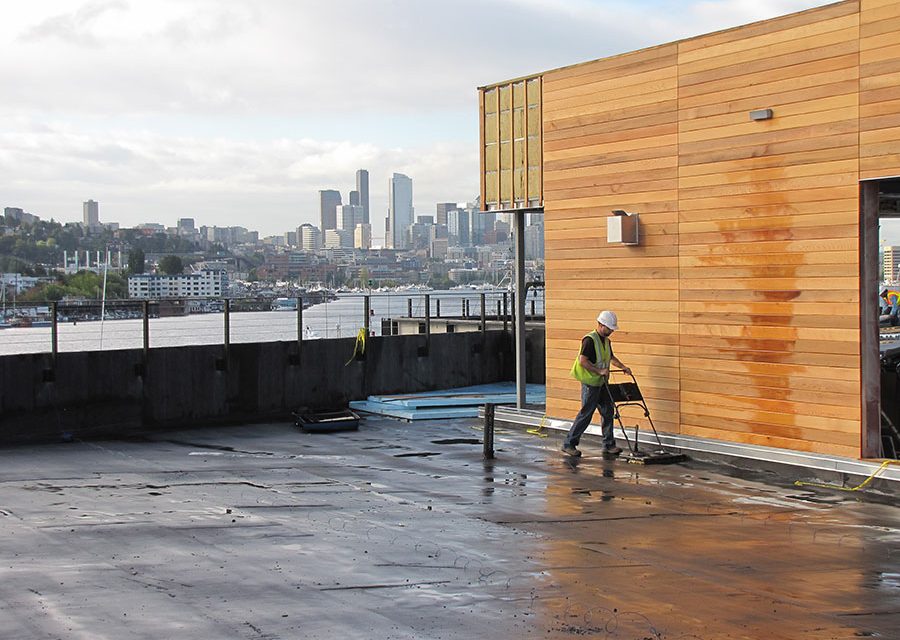
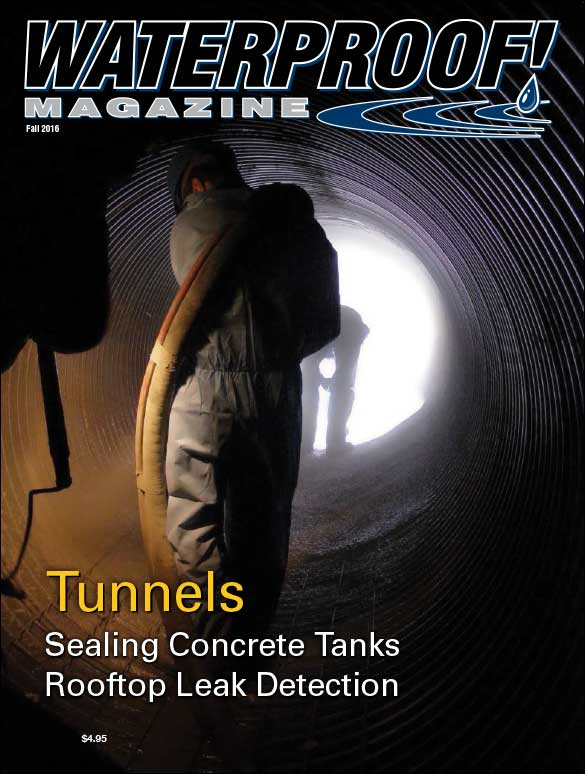
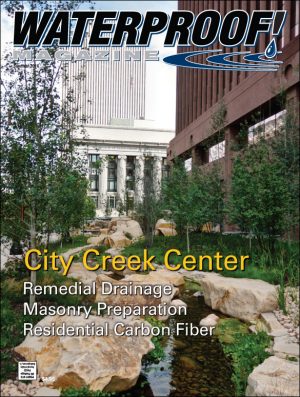
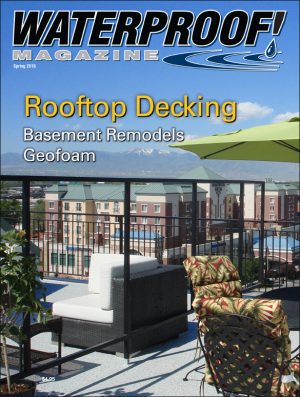


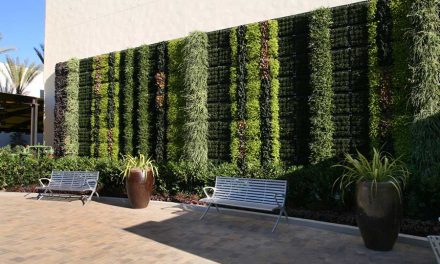
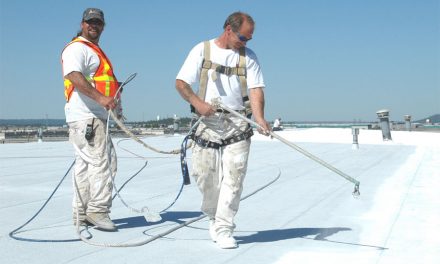
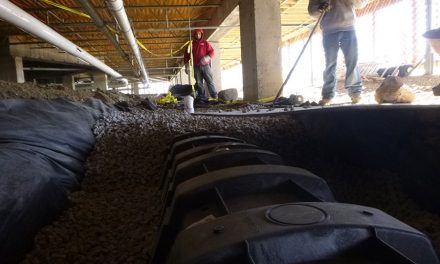
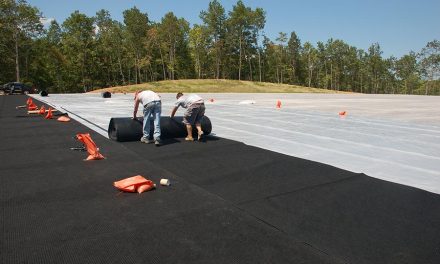










looking for a system price for material to install on a roof of 50,000 sqft